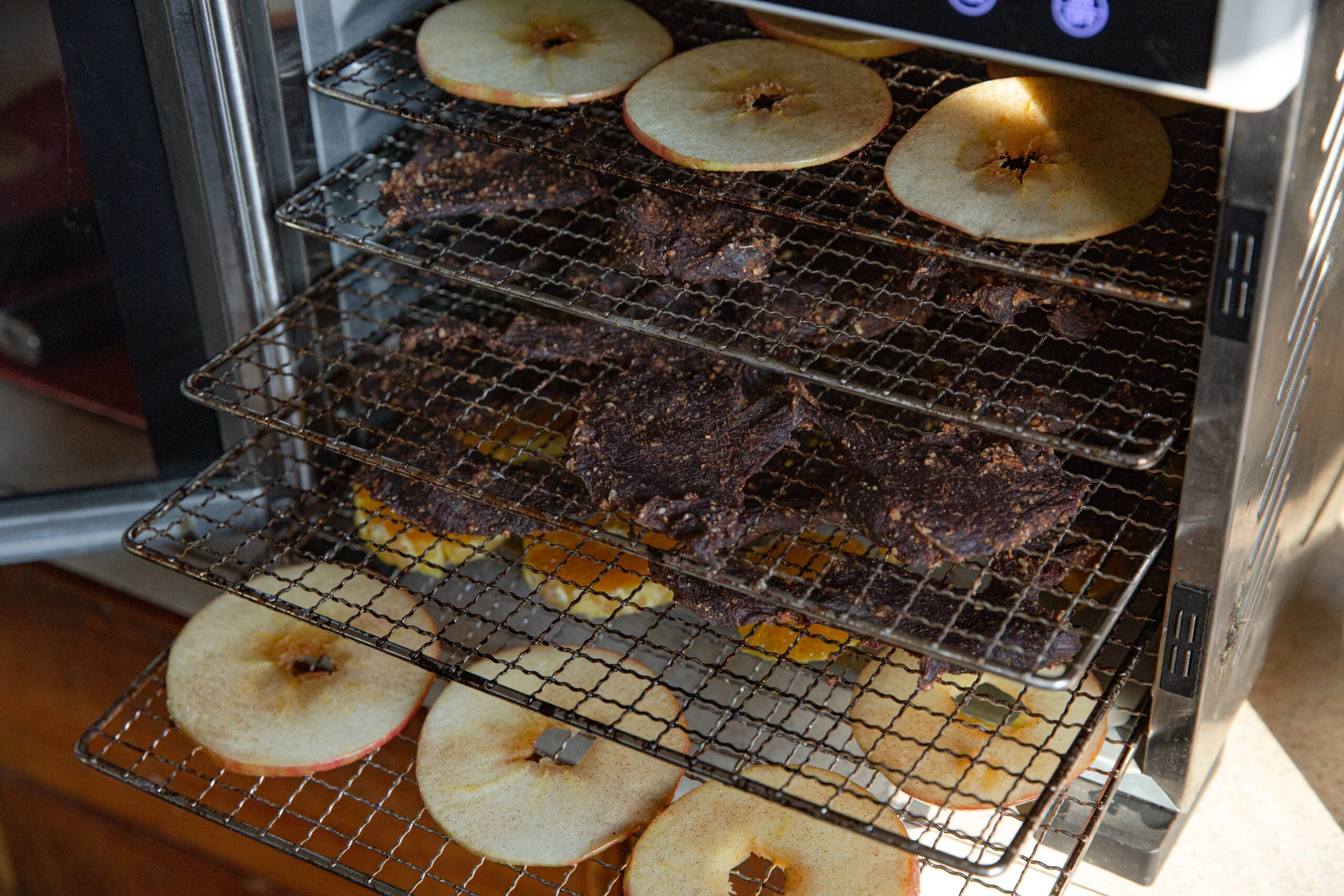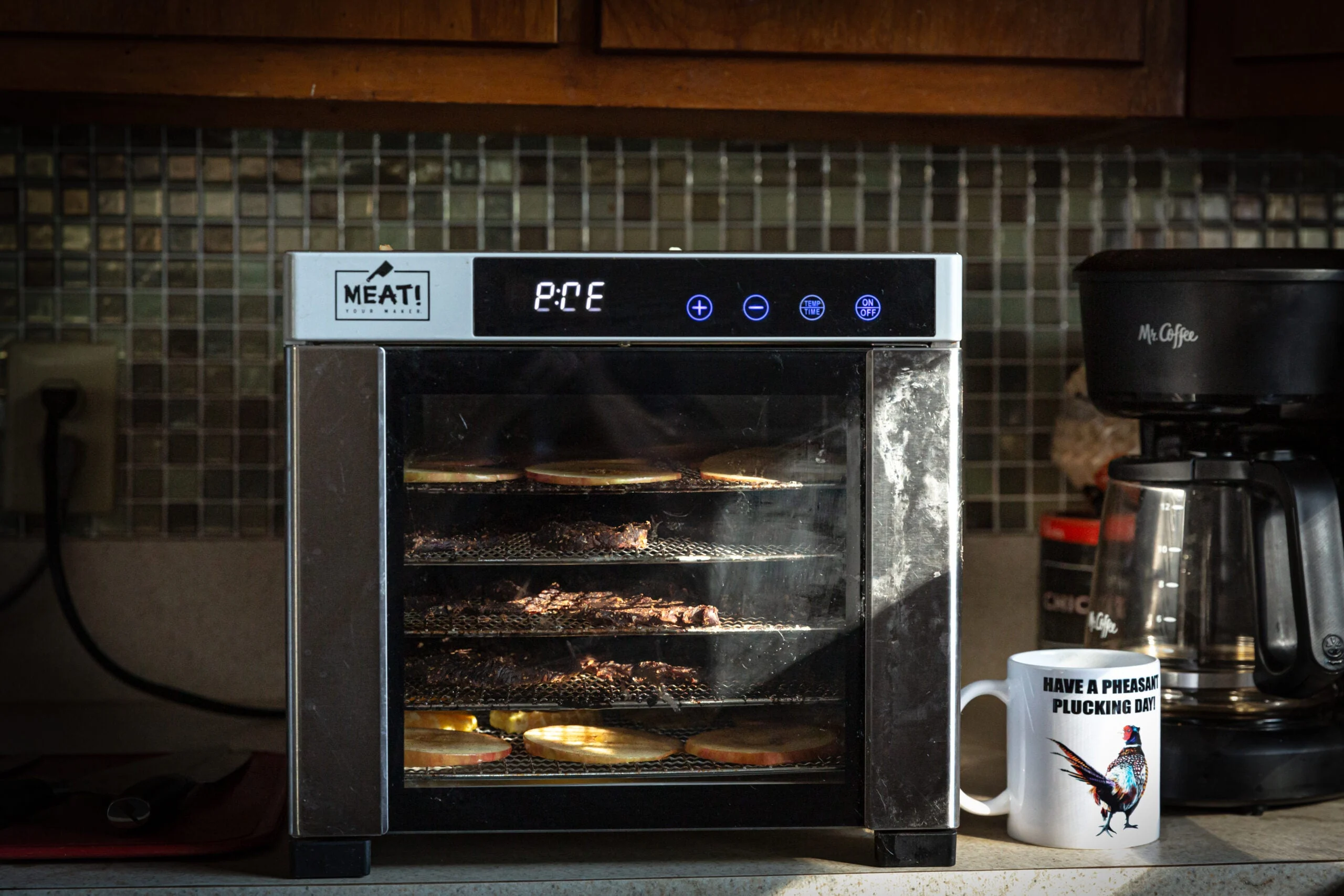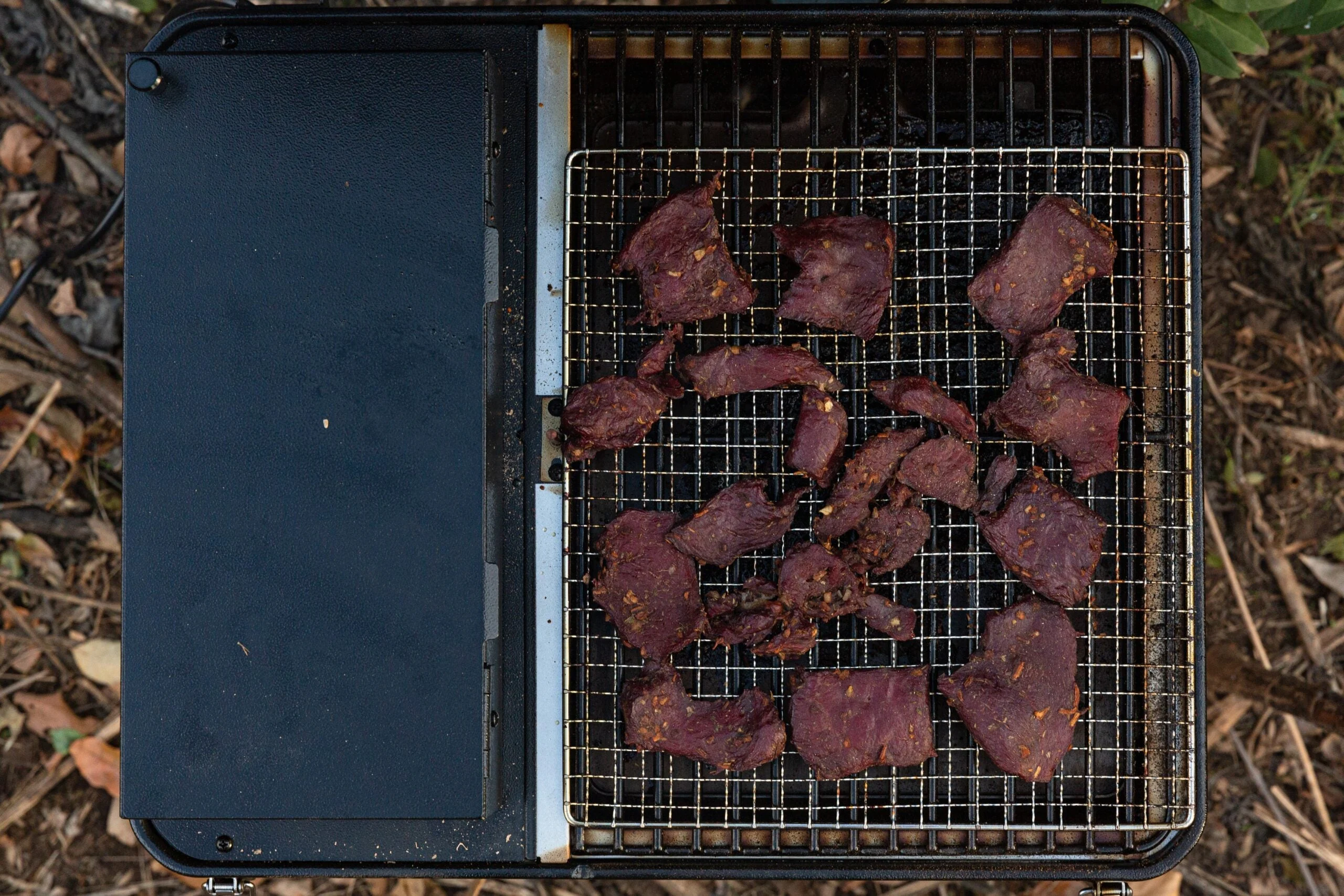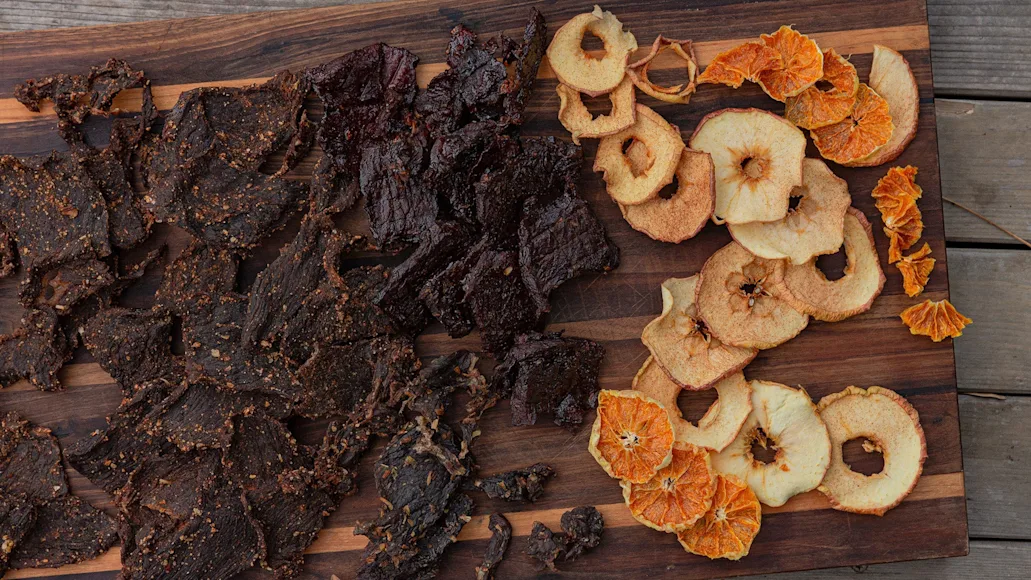Dehydrating food is considered one of our oldest—if not oldest—method for preserving food. For as long as our species has been gathering, foraging, and throwing spears at wild beasts, we have been extending the expiration date on our food through various forms of dehydration.
The concept of dehydrating food is simple: remove moisture to prevent the growth of bacteria, fungus, and yeast. This can be accomplished through various methods using different equipment, though some options are better than others. The benefits of dehydrating food far outweigh the negatives. You can dehydrate most non- and low-fat foods, including meat and fresh fruits and vegetables.
Benefits of Dehydrating Food
While dehydrating food extends its shelf life, the process also provides many other benefits. Some examples are below.
Reduces chance of bacteria and mold growth. (Part of extending shelf life.)
Maintains most of nutritional value despite loss of moisture. However, some nutrients like B vitamins, vitamin C, and beta carotene are lost when moisture is lost, so you may need to compensate for those vitamins depending on your needs.
Reduces weight and size of food. This is great for when you’re planning a camping or backpacking trip, when space is limited and less bulk is preferred.
Concentrates flavor, provides unique texture. Same as reducing a sauce, moisture goes out while flavor stays in. For items like orange slices, this creates a very sweet, slightly tart taste while also providing a leathery texture when biting in. This principle of dehydration is also the reason every deer hunter has more friends are hunting season, all asking for one thing: jerky, please.
Getting creative ahead of spice mixing. Dehydrating then grinding foods to create a spice mix can produce a very flavorful and unique blend (example: dehydrating blueberries, jalapeños, and garlic gloves then blasting into a grind to mix with ground coffee, kosher salt, and black pepper).
Negatives of Dehydrating Food

After its initial phase of two hours at 160 F, you can dehydrate both meat and fruit together at 140 for however long is necessary. Jack Hennessy
There aren’t many, and all can be overcome, if a person is aware and acts accordingly.
More calories in smaller package. It can be easy to overeat, so be mindful of the original calorie count regardless of the current size of the food. Gas stations may sell snack-size jerky, but, for some brands, two pieces is equivalent calorie-wise to the recommended meat serving size for lunch or dinner (160-200 calories).
Less water intake. We get upwards of 30 percent of our daily water from our foods. If you’re consuming more dehydrated foods than normal, make sure to compensate by drinking more water.
Loss of some vitamins. Same as compensating by drinking more water, you may wish to invest in a daily vitamin if planning to survive on dehydrated foods for a period of time.
Methods and Gear for Dehydrating Food

A pellet grill, something as simple as this Ranger from Traeger, is a solid option for dehydrating meat. Jack Hennessy
Sun and air drying don’t require equipment and are likely one of the oldest ways to dehydrate food but also introduce a couple uncontrollable factors for some climates: temperature and humidity level. The ideal temperature for dehydrating foods will vary by food, but, as a general rule, the humidity level should be kept between 12 and 18 percent, a condition that may be hard for some in certain areas to count on.
For the above reasons, various equipment can be used to more reliably dehydrate food.
Solar Drying
Powered by the sun, these function by using sun’s power to heat air, which then circulates around the food to dry it out. This gear is more environmentally friendly, but at the cost of dollars and potentially reliability compared to other options.
Oven
A convection oven, in principle, isn’t much different than an electric dehydrator, assuming it circulates heats evenly. However, most ovens won’t go as low in terms of temperature compared to a dehydrator. Some foods require temps lower than an oven provide; otherwise you end up hardening the food and ruining its texture before it ever properly dehydrates. But for jerky, or anything that calls for 140 F or higher, a good convection oven—assuming its internal temperature gauge functions properly—is an option. Conventional ovens aren’t a great option for anything, but are more affordable.
Smoker / Pellet Grill
Most smokers and pellet grills won’t go below 160 F since this is considered the lowest “safe” temperature for cooking/smoking meat. But a smoker or pellet grill, same as a reliable convection oven, will circulate heat and air evenly to dehydrate foods that can work in the 160 F range over a long period of time.
Electric dehydrator
This is, in my opinion and experience, the most reliable method. Prices will vary, but you can usually find a quality one, when on sale, for $100 or so. I’ve using MEAT!’s 6-Tray
for a few years now and it functions very well. A good dehydrator will go as low as 90 F and as high as 170 F while providing consistent 360-degree airflow. This is one of the few pieces of equipment I feel belongs in every kitchen.
General Best Practices for Dehydrating Food

You can hand-cut food for dehydration, but, sometimes, for the best, most-uniform results, you may wish to incorporate a slicer or mandoline. Jack Hennessy
As mentioned earlier, most non- or low-fat foods are fair game. Foods with a notable fat content—such as eggs, avocados, olives, anything dairy—present food-safety issues, as fat, in terms of food preservation, will oxidize and cause spoilage.
Size
When dehydrating food, you want to keep slices or pieces as uniform as possible—slices likely no thicker than 1/4-inch. Because some foods can take upwards of 48 hours to dehydrate, the slightest difference in size over a long period of time could mean one piece gets dehydrated correctly while another does not (whether too dry or not dry enough).
Blanching or steaming
Blanching (dipping food in boiling water then quickly pulling and cooling in an ice bath or under cold running water) can help vegetables retain their color and reduce dehydration time. For any vegetable you would not eat raw or that are particularly tough (e.g., carrots or potatoes), it helps to first blanch; otherwise the dehydration time will be potentially days. With fruits such as berries or cherries, a blanch will crack the skin and promote quicker and more thorough dehydration.
Ascorbic or citric acid
These both are an option to prevent the browning of some fruits such as apple slices. I personally like to squeeze fresh lemon juice overtop my apple slices before dehydrating.
General Best Temps and Times for Dehydrating Food
It will vary greatly by type of food and how you are prepping the food. For example, sliced apples and blueberries will require a similar temperature but, though both fruits, will vary significantly in terms of time needed. The “doneness” test will also vary by individual food item, you may need to research a bit more aside from the info here.
Food
Temperature
Time range
Herbs
95 F
1-4 hours
Vegetables
125 F
4-18 hours
Beans and lentils
125 F
4-8 hours
Mushrooms
125 F
3-10 hours
Fruit
135 F
6-24 hours
Sauces and syrups
135 F
6-12 hours
Pre-cooked meats
140 F
4-6 hours
Grains
145 F
6-24 hours
Raw, lean meat
160 F
4-8 hours
Expiration Date
Vacuum sealing—whether via bags or jars—removes air and will help preserve food. The tighter the seal, the better. Desiccant packets aid in removing moisture, while oxygen-absorber packets remove oxygen. Both are an option to extend shelf life, as the combination of oxygen, moisture, and heat lead to spoilage. To reduce effects of heat, store in a cool, dry place. For some foods with an air-tight seal, the shelf life is upwards of 30 years according to some sources. However, below are some general timelines based on general best practices for dehydrating food at home.
Food
Shelf life
Herbs
1-2 years
Vegetables
6 months
Beans and lentils
1-2 years
Mushrooms
2-4 months
Fruit
6-12 months
Sauces and syrups
6-12 hours
Pre-cooked meats
1-2 months, 6 months if cured
Grains
1-2 years
Raw, lean meat
1-2 months, 6 months if cured
Ideas for Dehydrating Food

Few smells top that of freshy brewed coffee alongside the wafting fumes of dehydrating whitetail jerky and cinnamon-spiced apples. Jack Hennessy
The process of dehydrating food can be quite fun and, depending on your lifestyle, having dehydrated food on hand can is a major convenience. For backcountry hunters, pulling game from the freezer and dehydrating is a great way to make room for the upcoming season while also saving money versus purchasing pre-packaged dehydrated meals. Below are some ideas to get you started.
Dehydrated camp meal
It could be something as simple as buying a frozen mix of vegetables, cooking some lean ground meat with a bit of seasoning, then dehydrating both and combining with potatoes flakes (instant potatoes). Vacuum seal then combine in a thermos with boiling water for a warm, hearty meal while camping.
Apple chips
This is a favorite among my kids. It’s pretty simple: Core an apple, sliced to 1/4-inch thickness, squeeze fresh lemon juice overtop both sides of all slides, sprinkle with Bearded Butcher Blend Cinnamon Swirl
, dehydrate at 140 for 8-10 hours.
Fruit Leather
Get creative with fruit medleys, puree, perhaps add some honey, place on parchment paper and place in dehydrator at 140 for 6-8 hours. This option is far healthier and more delicious than anything store-bought.
Jerky

One benefit a pellet grill can offer that a dehydrator cannot is that smoky flavor. Jack Hennessy
This is an oldie but a goodie: “Bourbon Cherry Chipotle Venison Jerky
,” made from whole muscle. Don’t have venison? Use beef, top round.
Homemade oatmeal
Dictate your breakfast and cut down on the sugar from all that store-bought stuff with this one. Pick up some quick-cooking rolled oats, some mild powder, and dehydrate your favorite fruits, perhaps include some nuts in the package. Same as the camp meal, seal then rehydrate with boiling water.


